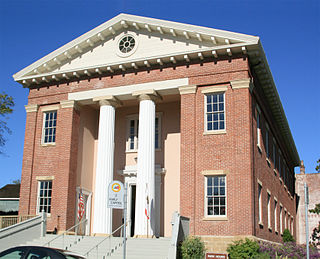
Benicia is a city in Solano County, California, located on the north bank of the Carquinez Strait in the North Bay region of the San Francisco Bay Area. It served as the capital of California for nearly thirteen months from 1853 to 1854. The population was 26,997 at the 2010 United States Census. Benicia is just east of Vallejo and across the strait from Martinez.

The Native Sons of the Golden West (NSGW) is a fraternal service organization founded in the U.S. state of California in 1875, dedicated to historic preservation and documentation of the state's historic structures and places, the placement of historic plaques, and other charitable functions in California. In 1890 the organization placed California's first marker honoring the discovery of gold, which gave rise to the state nickname, "The Golden State". U.S. President Richard M. Nixon and Chief Justice Earl Warren served terms as presidents of the NSGW.
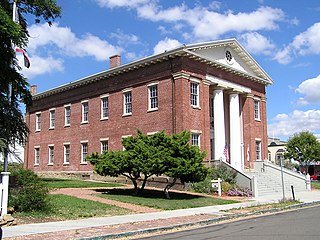
Benicia Capitol State Historic Park is a state park in Benicia, California, United States. The park is dedicated to California's third capitol building, where the California State Legislature convened from February 3, 1853, to February 24, 1854, when they voted to move the state capital to Sacramento. It is the only pre-Sacramento capitol that remains. The park includes the Fischer-Hanlon House, an early Benicia building that was moved to the property and converted into a home in 1858, after the legislature departed. Benicia Capitol State Historic Park just off the city's main street also includes a carriage house, workers' quarters and sculptured gardens.

Marshall Gold Discovery State Historic Park is a state park of California, United States, marking the discovery of gold by James W. Marshall at Sutter's Mill in 1848, sparking the California Gold Rush. The park grounds include much of the historic town of Coloma, California, which is now considered a ghost town as well as a National Historic Landmark District. The park contains the California Historical Landmarks: a monument to commemorate James Marshall (#143), the actual spot where he first discovered gold in 1848 (#530). Established in 1942, and Coloma Road (#748),. The park now comprises 576 acres (233 ha) in El Dorado County.
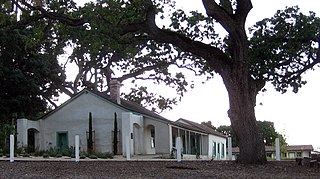
The Alviso Adobe Community Park is a 7-acre (2.8 ha) park in the city of Pleasanton, California, United States. It is built around an adobe house constructed in 1854 by Francisco Alviso on the Rancho Santa Rita Mexican Land Grant. The Alviso Adobe is a rare surviving example of an early American adobe that was continuously in use until 1969. The building is registered as California Historical Landmark #510 in 1954, but most of the historical marker was later found to be erroneous.

The Old Masonic Hall, also known as Benicia Masonic Hall, is a historic building in Benicia, California. Constructed by Benicia Masonic Lodge No. 5 in summer 1850, on land donated by Alexander Riddell and with lumber donated by Benicia founder Robert Semple, it was the first purpose build Masonic Hall in California. It was occupied by the lodge October 14, 1850, and formally dedicated December 27, 1850.
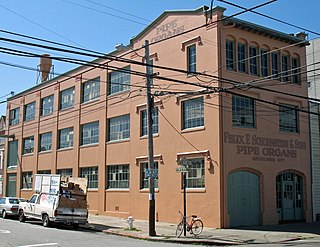
Schoenstein & Co. formerly known as Felix F. Shoenstein and Sons, is the oldest and largest organ builder in the western United States. It was founded in 1877 by Felix F. Schoenstein in San Francisco, California; the company is now based in Benicia, California.

Agua Mansa is a former settlement in an unincorporated area of San Bernardino County, near Colton, California, United States. Once the largest settlement in San Bernardino County, it is now a ghost town. Only the cemetery remains.

The architectural structures of Fredericksburg, Texas are often unique to the Texas Hill Country, and are historical edifices of the German immigrants who settled the area in the 19th Century. Many of the structures have historic designations on a state or national level. The Gillespie County Historical Society is actively involved in assisting with preservation.

Native Daughters of the Golden West is an American non-profit organization for women born in California. The organization focuses on the care and preservation of California history. It is the sister organization to the Native Sons of the Golden West.

An outgrowth of local camp meetings, Rockville Stone Chapel was constructed in the fall of 1856, in use by Christmas of that year, and dedicated in February 1857. Divisions in the congregation over slavery soon split the congregation, with the Northern faction splitting off at Christmas Eve 1863 to form their own church. Attendance at the chapel slowly declined, with the last resident pastor leaving in 1895. Although services continued sporadically, the building fell into disrepair and, in 1929, the chapel was donated to the County of Solano. With the onset of the Great Depression that year, restoration did not occur for another decade, with the WPA finally accomplishing a full renovation in the spring of 1940. Declared a State Historical Landmark in October 1962, the chapel continues in use today (2019), serving as the sanctuary for the local Church of Christ congregation and also hosting weddings and funerals.

The Gates of Anaheim are a series of gates in California that mark the historic entrance to Anaheim, California. Four city gates were built: North, East, South, and West. They were designated a California Historic Landmark (No.122) on March 29, 1933.
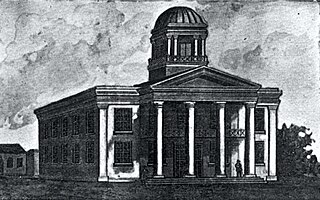
Sacramento First Courthouse also, Former California State Capitol site, is historical site in Sacramento, California. The Courthouse was also the first and second California State Capitol. The site is California Historical Landmark No. 869, registered on January 11, 1974. At the northwest corner of 7th Street and I Street, 651 I Street, Sacramento was a building that served as California's State Capitol. The first period was January 16, 1852 to May 4, 1852, and the second period was from March 1, 1854, to May 15, 1854, with the California State Legislature third and fifth sessions. The 651 I Street building was the Sacramento County courthouse. The site of former California State Capitol - Sacramento County courthouse is now the Main Sacramento County Jail built in 1989. A California Historical marker was place at the site in 2007 by California State Parks working the Sacramento Trust for Historic Preservation.

Site of First County Free Library Branch in California, is a historical site in Elk Grove, California in Sacramento County. The Free Library Branch opened in 1908.though the work of the principal of Elk Grove Union High School, Miss Harriet G. Eddy. The site of the County Free Library is at 9125 Elk Grove Boulevard, Elk Grove. With the success of the Elk Grove County Free Library other County Free Libraries started.

Sheldon Grist Mill Site, is historical site in Sloughhouse, California in Sacramento County. The site is a California Historical Landmark No. 604 listed on June 2, 1949. The water powered gristmill, was used turn grain into flour, was on Rancho Omochumnes. The gristmill was built by Jared Dixon (Joaquin) Sheldon. Sheldon was grant then five square league of land on Rancho Omochumnes by the First Mexican Republic in 1843 by Mexican Governor Manuel Micheltorena as payment for carpenter work on the Monterey Custom House. Sheldon born on January 8, 1813, in Vermont and travelled to California 1832, working as a carpenter and millwright. Sheldon married Catherine Rhoads, the daughters of Thomas Rhoads in March 1847. Sheldon and his partner, William Daylor, also did some gold mining. Sheldon built a dam on Clark's Bar river on the his Sheldon Grant to irrigate the crops on his lands. The dam flood a California Gold Rush miners' claims. The angry miners' shot Sheldon on July 11, 1851. The conflict with Sheldon and the miners is called the Riot on the Cosumnes. In the conflict Sheldon was not the only one shot. Also Killed was James M. Johnson of Lancaster, Iowa and Edward Cody of Fox River, Illinois. Three were wounded: Calvin Dickerson of Berrien County, Michigan, Emanuel Bush of Des Moines County, Iowa and one unnamed miner. The Sheldon Grant was boarded on the south by the Cosumnes River and north by Deer Creek, 17 miles long between the rivers. The Sheldon Grist Mill was just west of the Sloughhouse Pioneer Cemetery, where Sheldon and his partner William Daylor and are buried. The site today is still mostly farmland.

Plum Valley House was built in 1854 by John Bope by hand. The Plum Valley House is a California Historical Landmark No. 695 listed on September 11, 1959. Bope built the Plum Valley House from hand hewn logs and whipsawn cut lumber. Bope house was named for the many wild plums which grow on the land near the house. The Plum Valley House was a toll station for travelers heading west on the Henness Pass Road between Marysville and Virginia City. Many for the travelers came west looking for gold in the California Gold Rush. The toll road was owned by the Henness Pass Turnpike Company, originally called the Truckee Turnpike Company founded in 1859. The Henness Pass toll closed after the completion of the First transcontinental railroad in 1868.
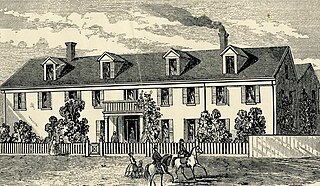
Benicia Seminary was founded by a Board of Trustees in June 1852, as the Young Ladies' Seminary of Benicia in Solano County, California in the city of Benicia, California. The Benicia Seminary site is a California Historical Landmark No. 795 listed on September 6, 1964. At is peak the Young Ladies' Seminary of Beniciain had 149 students from all over Northern California. Young Ladies' Seminary of Beniciain was the Protestant Christian Junior college of its day. This was the first of this type of school in California. Mrs. S. A. Lord was the first School Principal in 1852, in 1853 Miss J. M. Hudson became Principal. In 1854, Atkins purchased the school. The Young Ladies' Seminary of Beniciain was sold to Cyrus Mills and Susan Mills in 1865 for $5,000, by Mary Atkins. Thus Benicia Seminary became Mills College. Mills College moved to Oakland, California in July 1871 by train, students, teacher and supplies. Mills College is still a private college. Mills College was granted a charter as a college by the State of california in 1885. Mary Atkins Lynch was born July 7, 1819, in Jefferson, Ohio. Mary Atkins married John Lynch (1824–1900) in 1869. Mary Lynch died September 14, 1882, at aged 63 in Benicia, California. Mary Lynch is buried at Benicia City Cemetery.

Vallejo California State Capitol was founded on May 4, 1852, at a building in Vallejo, California in Solano County, California. The Vallejo California State Capitol site is a California Historical Landmark No. 574 listed on April 1, 1957.

First Presbyterian Church of Benicia was founded on April 15, 1849, at a building in Benicia, California in Solano County, California. The Presbyterian Church of Benicia site is a California Historical Landmark No. 175 listed on March 6, 1935. The First Presbyterian Church of Benicia was the first Protestant church founded in California with a staff pastor. The pastor was Reverend Sylvester Woodbridge Jr., who founded the church in 1849 using a school house. Woodbridge came to California in 1848. First Presbyterian Church built a building that was dedicated on March 9, 1851. Woodbridge was the pastor till 1869, when he moved to San Francisco. The Presbyterian California Gold Rush church ended in 1875. The Church became a One-room school and most the members moved to the First Congregational Church of Benicia founded in 1865. Later the church-school building became an Episcopal Church. The Episcopal Church soon built a larger church. The 1851 church was remove and the land became Benicia City Park.
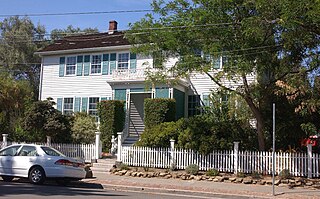
Fischer-Hanlon House is historical house built in 1858 in Benicia, California in Solano County, California. The Fischer-Hanlon House is California Historical Landmark No. 880, listed on March 14, 1975. The Fischer-Hanlon House was built by Joseph Fisher in 1849. Fisher, a butcher, was a Swiss immigrant who came to Benicia and purchased a plot of land on July 1, 1858. He then purchased a nearby old hotel and had it moved to his lot. The California Gold Rush home is built in an East Coast Federalist architectural style. The wooden house has fourteen rooms. It was damaged in a fire in 1856. After Joseph and Catherine Fischer moved in they repaired and remodeled the home. The Fischer house was passed down to later generations, then was donated to the State of California in 1969 by Fischer's granddaughters, Raphaelita and Catherine Hanlon, in memory of their sister Marie Rose. The Fischer-Hanlon House is restored and is furnished in 1880s decor. The outside is a Victorian Garden.






















